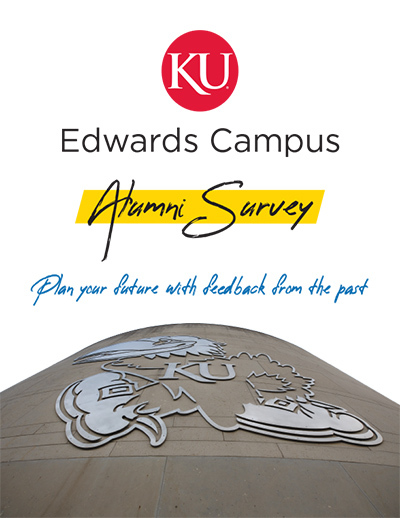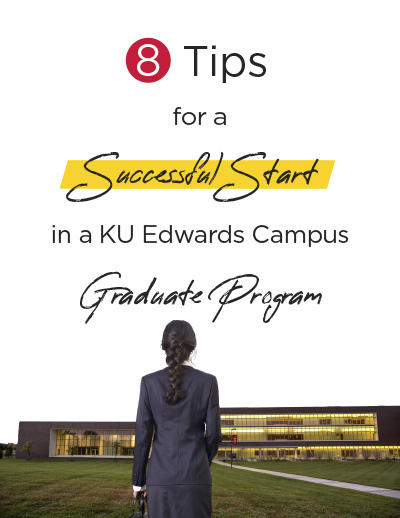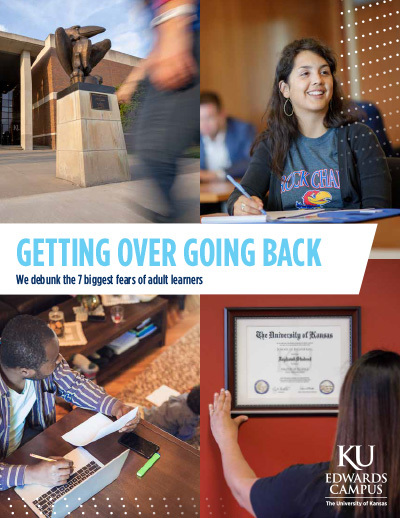Students Gain Advantages from Hands-On, Real-World Scenarios in Environmental Geology Workshops
Online learning can only go so far in teaching environmental geology skills. That’s why KU’s Environmental Geology Professional Science Master’s (PSM) degree and certificate program requires field workshops designed to give students valuable hands-on experience outside of the classroom.
This past spring, six environmental geology students attended an in-person, one-day field workshop at the KU Edwards Campus, designed by Mackenzie Cremeans, former assistant teaching professor.
The workshop focused on the process of vapor intrusion assessment —from screening level assessment to remediation processes — with the goal of giving students opportunities to practice real-world skills in a low-stakes environment. “This gives students, who typically learn such processes on the job, additional confidence to perform well in their careers when the stakes are higher,” Cremeans said.
How the vapor intrusion assessments were structured
The workshop centered around a fictitious field site designed to familiarize students with the Edwards Campus while exploring potential vapor intrusion pathways. “Each student conducted the vapor intrusion assessment process according to Environmental Protection Agency (EPA) and Department of Defense (DOD) guidelines, beginning with a walkthrough of campus buildings with schematics in hand,” Cremeans explained.
After the walkthrough, students worked together to locate potential entry points for vapor. In this process, they were provided with datasets mimicking a real-world scenario, allowing them to determine potential fate and transport of the vapor, as well as potential health risk levels.
Cremeans said each student had the opportunity to install a vapor pin, analyze and model data, and, ultimately, come to a conclusion about the potential likelihood, magnitude, and exposure risks of vapor intrusion at the site.
Students share what they learned
Environmental geology student Chris Hilger said the timing was perfect for him to participate in the workshop. “What I learned in the workshop helped me understand processes I will be overseeing in my role as a project manager,” he said. “I will be managing some vapor intrusion work on a property that may have been affected by a former dry cleaner.”
HIlger continued, “I have been on the job six months, and the field experience I gained from the workshop helped me better understand the full aspects of remediation.”
Erica Thieleman, an environmental consultant for an engineering firm, selected the one-day workshop because she was interested in learning more about the big picture. “I have done some vapor intrusion sampling before, but I wasn’t involved in analyzing the results,” she said. “I can use what I learned to take the next step on projects to actually perform the data analysis.”
Thieleman said her key takeaway from the workshop is that “evaluating a building’s vulnerability to vapor intrusion relies on more than just sub-slab soil vapor and indoor air samples. You need to follow a ‘multiple lines of evidence’ approach, which includes:
- Understanding the nature of a volatile contaminant.
- Understanding local groundwater flow.
- Analyzing groundwater samples for the contaminant near the building.
- Inspecting the building for potential sources of volatile compounds in the air, such as paint, glues, and other common chemicals.”
How students benefit from this experience
Cremeans said hands-on scenarios are valuable to the professional development of students because they provide practice with industry-specific frameworks. While many environmental geologists receive the majority of their training on the job, students in the environmental geology PSM program have the advantage of seeing and using the relevant tools and frameworks during these workshops.
Students also engaged with professionals and each other to develop the necessary skills to tackle vapor intrusion. This fills an essential need to solve many ongoing and future challenges associated with contaminated sites worldwide.
The Environmental Geology PSM program is supported by the Johnson County Education Research Triangle.
This blog was written by Jeanene Dunn.





